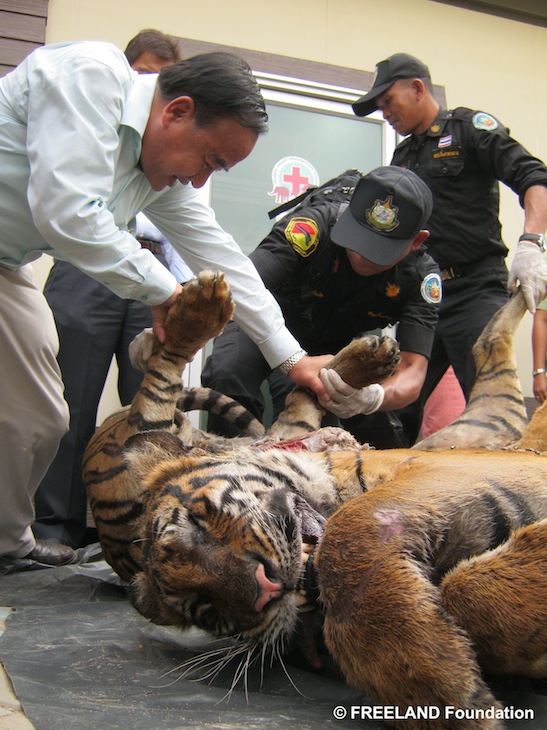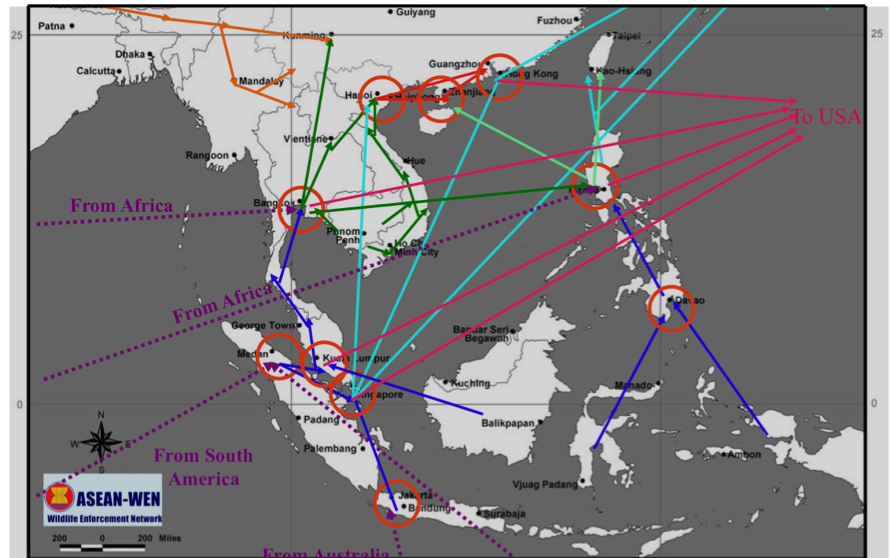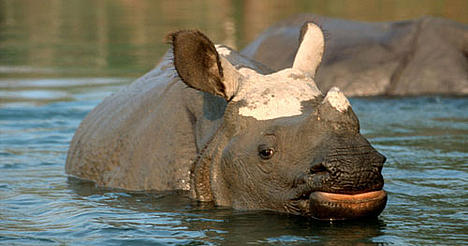[ASEAN Report] Corruption fosters wildlife traffickers
South East Asian countries are homes for various endanger species that are target for poachers and traffickers. ASEAN Wildlife Enforcement Network reported on their website, experts estimate the illegal wildlife trade is up to US$10 – 20 billion dollar annually or ₩11,310 billion Korean Won.
Associated Press published a report (Aug 15) on large-scale wildlife traffickers in South East Asia, interviewing former officers and wildlife activist.
A wildlife anti-trafficking activist working for FREELAND Foundation, Steven Galster said on his interview with AP, “Most high-level traffickers remain untouched and continue to replace arrested underlings with new ones.”
Despite of honest officers effort to break down the trafficking, some officers plotting with the traffickers, as a former Vietnamese officer told.
Lt. Col. Adtaphon Sudsai, an officer who was commanded to drop the case he was working on a pangolin smuggling in a gang along the Mekong River, Vietnam, four years ago.
Adtaphon was working on Mrs. Daoreung Chaimas case. She is alleged by activists to be one of East Asia’s biggest tiger dealers. Even though the evidence shows that the two cubs were not from zoo-bred as she admitted, Mrs. Chaimas is still free.
Because of his officer husband’s affluence, Mrs. Chaimas can circumvent the law. Adtaphon told when the second time Mrs. Chaimas was going to be arrested, the officer on duty was then redeployed to another post.
Another case in Thailand, a former officer told he got a visit from a senior police general while working on a wildlife trading case in Bangkok’s Chatuchak Market. He was ordered to stop the investigation or to resign from his work.
“I admit that in many cases, I cannot move against the big guys,” Chanvut, the retired general, told AP. “The syndicates like all organized crime are built like a pyramid. We can capture the small guys but at the top they have money, the best lawyers, protection. What are we going to do?” He added.

Thailand's Nature Crime Police seized carcasses of two Tigers along with a carcasses of Leopard and Golden Cat on May 2012 (Photo: www.freeland.org)
ASEAN WEN says due to habitat lost, poaching and trafficking to supply demand from the fashion industry, pet dealers, restaurant, and traditional pharmacy, many species are driven towards extinction.
South East Asian’s light penalty and lack of awareness from its citizen make ASEAN as an easy target of wildlife traffickers. The endanger species are sold to other regions such as China, Europe and the United States.
Almost all of endanger species are being trafficked. Timber, rare plants, bones, scales and other ingredients for traditional medicine, pets and zoo exhibits, collection, decoration and luxury items, as well as wild meat.
In ASEAN WEN 2009 report, estimated 13,000 metric tons of turtle is shipped to China from South East Asia every year.
Tigers are one of the most vulnerable species to poaching. According to WWF records, there were 9 subspecies of tigers in Asia, but it is only 6 subspecies left in the world. Sumatran Tiger is the only left in Indonesia, while Javan Tiger and Bali Tiger has been extinct 50 years ago. There are only as few as 3,200 tigers in wild life and it is the lowest number at all-time.
In July 2012, WWF released report of list of 23 countries in Africa and Asia that are facing high levels of poaching and trafficking of Ivory, Rhino horn and Tiger parts. Vietnam was in the top list and China was also highlighted in the report as well as Thailand and Central African countries.
Meidyana Rayana Intern Reporter news@theasian.asia






























































































